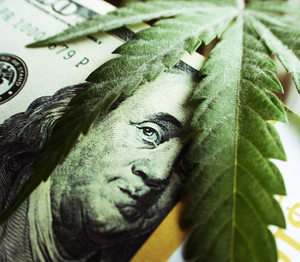The Tragically Close Connection Between Marijuana and Suicide
Would American voters have voted “yes” for marijuana legalization if they had known how closely its use is associated with suicide and psychosis?

For nearly twenty years, American states have agreeably legalized the use of marijuana first for medical and then for recreational purposes. The process started in California with medical marijuana legalization in 1996. Then, the first two states to legalize recreational use of this drug were Colorado and Washington, both in 2014.
It was the public, the voters, who made these determinations. They voted on the initiatives, propositions or referendums to legalize medical marijuana and, usually at a later date, recreational marijuana.
Public opinion has swung from one extreme to another on the desirability of this legalization. In 1969, only 12% of Americans surveyed for a Gallup poll wanted this drug legalized. By 2020, this number had shifted to 68%.1
Why did so many people change their minds? When they voted “yes” to legalize either the medical or recreational use of this drug, were they fully aware of the effects of the drug? Or had they been lulled into thinking that it was harmless when used either medically or recreationally?
The other important question is this: If they had known that marijuana use has a close association with suicide, would anyone have voted for legalization?
The Efforts to Legalize Weed

Marijuana legalization has attracted huge donations from the likes of George Soros, Peter Lewis, founder of Progressive Insurance, and others.2 These donations underwrote the cost of establishing foundations like the Drug Policy Alliance which has long advocated for the legalization of all drugs, not just marijuana.3
As a result, by 2023, medicinal use is legal in 38 states and recreational use is legal in 23 states plus Washington, D.C.
You can be sure that any donor to the cause or pro-legalization advocacy organization would scoff at the idea that marijuana use is accompanied by any kind of life-threatening danger. Are they right? There is plenty of scientific information available that provides the real story.
Evidence of an Association Between Marijuana Use and Suicide
There is, in fact, so much evidence on this point that it will only be possible to briefly mention a few of them.
ONE: A recent analysis of surveys from 280,000 young adults shows that marijuana use is associated with increased risks of ideas of suicide, creation of suicide plans and attempts to kill oneself.4 Risks were greater for women than men and were true whether or not the person had also been diagnosed with depression.

In fact, there is a long list of problematic or even dangerous symptoms associated with marijuana use:
- Paranoia
- Hallucinations (especially auditory)
- Delusions
- Grandiosity
- Irritability
- Anxiety and agitation
- Depersonalization
- Disorganized thinking, speech, behavior
- Racing thoughts
- Obsessive ideation
TWO: An analysis of the mental health of more than 50,000 Swedish soldiers found that, over a fifteen-year follow-up period, those who had tried cannabis by the time they turned 18 were 2.4 times more likely to be diagnosed with schizophrenia than those who had not. The risk of this diagnosis increased with the frequency of cannabis use.5
THREE: A 2019 paper reported on a review of 269 previously published articles on this topic that encompassed the experiences of more than 23,000 individuals. This study found that those who were cannabis users in young adulthood had a 3.45-fold incidence of suicide attempts.6
FOUR: A 2023 report on marijuana use noted: “Cannabis is the most common illicit substance detected in suicide victims’ toxicology tests.” Further, these researchers found a positive association between drug use and suicidal ideation. “[A] younger age of initiation, long-term use, and heavy consumption were reported to be associated with even worse suicidal outcomes.”7
FIVE: A 2013 analysis of many studies and reports on this association drew these conclusions: A study of 4,800 people in the Netherlands noted that those who used cannabis had a higher risk of psychotic symptoms than those who did not. There was also a relationship between the frequency of marijuana use and this increased risk. These results were repeated in Munich. In New Zealand, those who began using marijuana by age 15 had an increased risk of psychotic symptoms by age 25.5
SIX: A 2012 study noted that: “Cannabis use was a relevant risk factor associated with both suicidal attempts and behaviors in psychotic and non-psychotic samples.”8

SEVEN: In a 2021 news story from NBC on psychosis and heavy vomiting occurring after high-potency cannabis use, an emergency room doctor at Parkview Medical Center in Pueblo, Colorado stated, “Almost every day I see a patient in the ER who is having a psychotic break after taking high-potency THC.”9
Is It Worth the Risk?
While cannabis may have beneficial effects for some people with specific medical conditions, widespread legalization could be seen as putting our youth at severe risk. After all, 2.7 million adolescents and 11.8 million young adults (18-25) use marijuana every year.10
There is far more of this kind of information than can be included here. However, none of this data accompanies ads for marijuana sales. It is not included in legislation for marijuana legalization. How would Americans feel about legalization if every initiative, referendum, proposition or constitutional amendment in favor of legalizing this drug included this information in its wording? Would they still vote yes?
Sources:
-
“Marijuana Views Linked to Ideology, Religiosity, Age.” Gallup, 2022. Gallup ↩︎
-
“Wealthy Ally for Dissidents in the Drug War.” New York Times, 1969. New York Times ↩︎
-
“Dug Policy Alliance.” Influence Watch, 2023. Influence Watch ↩︎
-
“Cannabis use may be associated with suicidality in young adults.” National Institute on Drug Abuse, 2021. NIDA ↩︎
-
“Cannabis use and the risk of developing a psychotic disorder.” Wiley Online Library, 2013. Wiley ↩︎ ↩︎
-
“Association of Cannabis Use in Adolescence and Risk of Depression, Anxiety, and Suicidality in Young Adulthood.” PubMed, 2019. PubMed ↩︎
-
“Suicidality risk after using cannabis and cannabinoids: An umbrella review.” PubMed, 2023. PubMed ↩︎
-
“Can cannabis increase the suicide risk in psychosis? A critical review.” PubMed, 2012. PubMed ↩︎
-
“High potency weed linked to psychotic episodes, mysterious vomiting illness in young users.” NBC News, 2021. NBC News ↩︎
-
“National Survey on Drug Use and Health, 2021.” Substance Abuse and Mental Health Services Administration, 2021. SAMHSA ↩︎







 ®
®